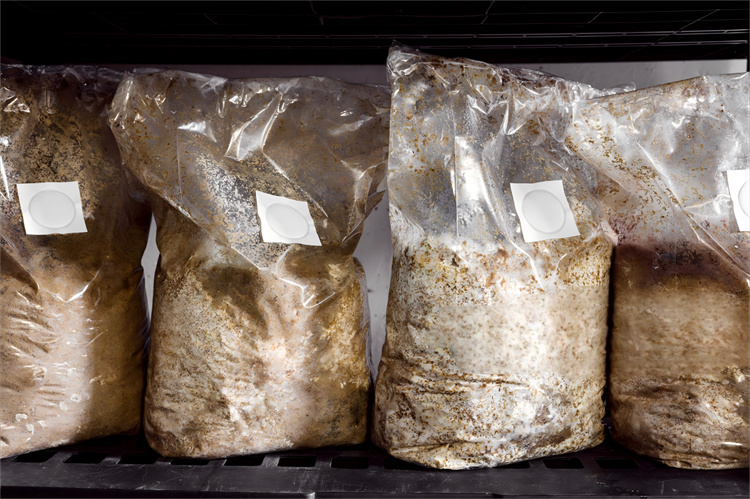
3. Permeable bags
(1) Principle: The core of the breathable plastic bag is the filter membrane. The choice of membrane depends on the volume or weight of the culture medium in the bag, the water content and the type of cultured bacteria. The primary function of the filter membrane is to maintain a clean environment inside the bag. Generally speaking, the pore size of the filter membrane is less than 0.1 micron, which can basically isolate infectious bacteria. However, in reality, the filter membrane material deforms under high temperature and high pressure, and usually 10%~50% of the pore size changes. Therefore, the filter membrane must be made of high-pressure resistant materials. The secondary function of the filter membrane is ventilation, and the air permeability is affected by the pore volume per unit area of the filter membrane. During the culture process, the gas generated by the mycelium metabolism must be discharged out of the bag, and the water in the culture medium in the bag must be prevented from evaporating too quickly. Therefore, the area of the breathable membrane needs to balance the relationship between the two. In addition, the filter membrane must also be able to withstand low-temperature storage for a long time.
(2) Breathable membrane type. At present, the breathable bags on the market are mainly divided by the breathable film type: non-woven polypropylene, rolled non-woven polypropylene and polypropylene film, rolled non-woven polypropylene with polytetrafluoroethylene, and polypropylene single-hole foam.
Breathable plastic bags: use copolymer polypropylene as raw material. Copolymer means two or more resin polymers. Single polymer polypropylene is usually easy to break after high pressure, and the bag is particularly prone to pinholes at the fold. The resin used in the production of copolymers has added lubricants and anticoagulants. In addition to these additives, resin manufacturers also use antioxidants, high (low) temperature stabilizers, etc. to manufacture resin products. Polypropylene (PP) is a heat-sealable plastic. Two pieces of PP are heated to the melting temperature and pressurized to bond, and they are permanently bonded after cooling. PP is resistant to high temperature and high pressure (about 125Ōäā). Its raw material cost is low. Recycled plastics must not be used, and the raw materials must be strictly tested to prove that they have no effect on mycelium growth.
The sterilization methods of breathable bags include heating, sterilizing gas, ultraviolet rays and gamma rays.








